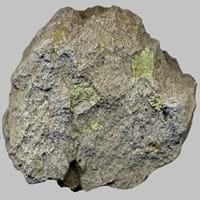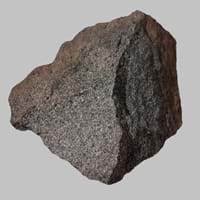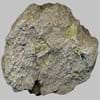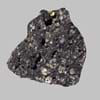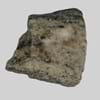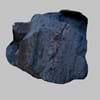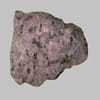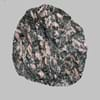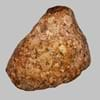Definition
Minette is a variety of Lamprophyre and is porphyritic alkaline igneous rock which is mainly dominated by biotite and potassic feldspar
Larvikite is an igneous rock and a variety of monzonite, notable for the presence of thumbnail-sized crystals of feldspar
Origin
Unknown
Larvik, Norway
Discoverer
Unknown
Unknown
Etymology
From French mine ore, mine + ette
From the town of Larvik in Norway, where this type of igneous rock is found
Class
Igneous Rocks
Igneous Rocks
Sub-Class
Durable Rock, Medium Hardness Rock
Durable Rock, Hard Rock
Other Categories
Coarse Grained Rock, Fine Grained Rock, Opaque Rock
Coarse Grained Rock, Fine Grained Rock, Medium Grained Rock, Opaque Rock
Texture
Porphyritic
Phaneritic
Color
Black, Bluish - Grey, Brown, Dark Greenish - Grey, Green, Grey
Black, Brown, Light to Dark Grey, White
Durability
Durable
Durable
Scratch Resistant
Yes
Yes
Appearance
Dull, Banded and Foilated
Shiny
Interior Uses
Countertops, Decorative Aggregates, Interior Decoration
Decorative Aggregates, Homes, Interior Decoration
Exterior Uses
As Building Stone, As Facing Stone, Garden Decoration
As Building Stone, As Facing Stone, Garden Decoration, Office Buildings, Paving Stone
Other Architectural Uses
Curbing
Curbing
Construction Industry
As Dimension Stone, Cement Manufacture, for Road Aggregate, Making natural cement, Manufacture of Magnesium and Dolomite Refractories
As Dimension Stone, Cement Manufacture, Construction Aggregate, for Road Aggregate
Medical Industry
Taken as a Supplement for Calcium or Magnesium
Not Yet Used
Antiquity Uses
Artifacts, Monuments, Sculpture, Small Figurines
Artifacts, Monuments, Sculpture
Commercial Uses
An Oil and Gas Reservoir, As a Feed Additive for Livestock, Gemstone, Metallurgical Flux, Production of Lime, Soil Conditioner, Source of Magnesia (MgO)
Cemetery Markers, Commemorative Tablets, Creating Artwork
Types
Minette, Alnoite, Camptonite, Monchiquite, Fourchite, Vogesite, Appinite and Spessartite
Quartz Monzonite, Syenite and Diorite
Features
Always found as volcanic pipes over deep continental crust, Host rock for Diamond, Is one of the oldest rock, Surfaces are often shiny
Available in lots of colors, Is one of the oldest rock
Archaeological Significance
Famous Monuments
Data Not Available
Data Not Available
Famous Sculptures
Data Not Available
Data Not Available
Pictographs
Used
Not Used
Petroglyphs
Used
Not Used
Formation
Minette formation takes place deep beneath the Earth’s surface at around 150 to 450 kms, and are erupted rapidly and violently.
Larvikite is a fine-grained, hard rock which is a type of metasomatite, essentially altered basalt. It forms with or without crystallization, either below the surface as intrusive rocks or on the surface as extrusive rocks.
Mineral Content
Amphibole, Carbonate, Garnet, Micas, Olivine, Phlogopite, Pyroxene
Albite, Amphibole, Apatite, Biotite, Feldspar, Hornblade, Ilmenite, Magnetite, Muscovite or Illite, Olivine, Plagioclase, Pyroxene, Quartz, Sulfides, Titanite, Zircon
Compound Content
Aluminium Oxide, NaCl, CaO, Iron(III) Oxide, FeO, Potassium Oxide, MgO, MnO, Sodium Oxide, Silicon Dioxide, Titanium Dioxide
Aluminium Oxide, CaO, Iron(III) Oxide, FeO, Potassium Oxide, MgO, MnO, Sodium Oxide, Phosphorus Pentoxide, Silicon Dioxide, Titanium Dioxide
Types of Metamorphism
Burial Metamorphism, Cataclastic Metamorphism, Contact Metamorphism, Hydrothermal Metamorphism, Impact Metamorphism, Regional Metamorphism
Cataclastic Metamorphism, Impact Metamorphism, Regional Metamorphism
Types of Weathering
Biological Weathering, Chemical Weathering
Biological Weathering, Chemical Weathering, Mechanical Weathering
Types of Erosion
Chemical Erosion, Coastal Erosion, Sea Erosion, Wind Erosion
Chemical Erosion
Grain Size
Fine to Coarse Grained
Medium to Fine Coarse Grained
Fracture
Conchoidal
Not Available
Porosity
Very Less Porous
Less Porous
Luster
Subvitreous to Dull
Subvitreous to Dull
Compressive Strength
Not Available
Cleavage
Conchoidal
Not Available
Toughness
Not Available
Not Available
Specific Gravity
2.86-2.87
2.8-3
Transparency
Translucent to Opaque
Opaque
Density
2.95-2.96 g/cm3
2.9-2.91 g/cm3
Specific Heat Capacity
Not Available
Resistance
Heat Resistant, Impact Resistant
Heat Resistant, Impact Resistant, Pressure Resistant
Deposits in Eastern Continents
Asia
Russia
Not Yet Found
Africa
Angola, Botswana, Cameroon, Ethiopia, South Africa
Not Yet Found
Europe
England, Hungary, Iceland, United Kingdom
Bulgaria, England, Germany, Norway, Romania, Switzerland
Others
Antarctica, Greenland
Not Yet Found
Deposits in Western Continents
North America
Canada, Mexico, USA
USA
South America
Argentina, Colombia, Ecuador
Argentina, Bolivia, Brazil, Chile, Colombia, Ecuador, Peru
Deposits in Oceania Continent
Australia
New South Wales, New Zealand, Queensland, South Australia, Western Australia
New South Wales, New Zealand, Queensland, South Australia, Western Australia
